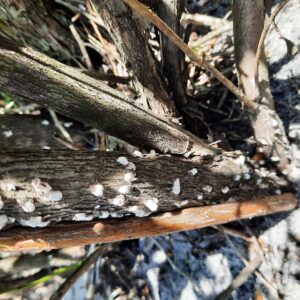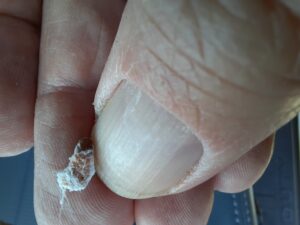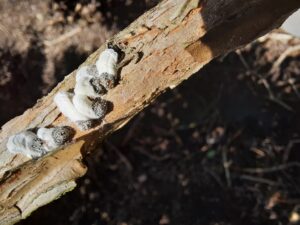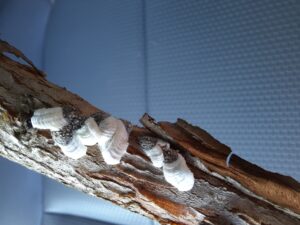Cottony Scale on Blueberry
go.ncsu.edu/readext?864485
en Español / em Português
El inglés es el idioma de control de esta página. En la medida en que haya algún conflicto entre la traducción al inglés y la traducción, el inglés prevalece.
Al hacer clic en el enlace de traducción se activa un servicio de traducción gratuito para convertir la página al español. Al igual que con cualquier traducción por Internet, la conversión no es sensible al contexto y puede que no traduzca el texto en su significado original. NC State Extension no garantiza la exactitud del texto traducido. Por favor, tenga en cuenta que algunas aplicaciones y/o servicios pueden no funcionar como se espera cuando se traducen.
Português
Inglês é o idioma de controle desta página. Na medida que haja algum conflito entre o texto original em Inglês e a tradução, o Inglês prevalece.
Ao clicar no link de tradução, um serviço gratuito de tradução será ativado para converter a página para o Português. Como em qualquer tradução pela internet, a conversão não é sensivel ao contexto e pode não ocorrer a tradução para o significado orginal. O serviço de Extensão da Carolina do Norte (NC State Extension) não garante a exatidão do texto traduzido. Por favor, observe que algumas funções ou serviços podem não funcionar como esperado após a tradução.
English
English is the controlling language of this page. To the extent there is any conflict between the English text and the translation, English controls.
Clicking on the translation link activates a free translation service to convert the page to Spanish. As with any Internet translation, the conversion is not context-sensitive and may not translate the text to its original meaning. NC State Extension does not guarantee the accuracy of the translated text. Please note that some applications and/or services may not function as expected when translated.
Collapse ▲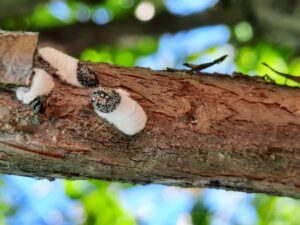 Cottony Scale ( (Pulvinaria sp./spp.) has been observed again this Spring on several commercial blueberry farms in southeastern NC. The insect is very difficult to see in winter but becomes highly visible in late April when egg-laying occurs and the females produce white egg sacs. The following images and quotes are from an image-only sample I sent to the NC State Plant Disease and Insect Clinic in 2021. The pest was identified by entomologist Matt Bertone, with additional comments on control measures from Hannah Burrack. Thank you, Matt and Hannah!
Cottony Scale ( (Pulvinaria sp./spp.) has been observed again this Spring on several commercial blueberry farms in southeastern NC. The insect is very difficult to see in winter but becomes highly visible in late April when egg-laying occurs and the females produce white egg sacs. The following images and quotes are from an image-only sample I sent to the NC State Plant Disease and Insect Clinic in 2021. The pest was identified by entomologist Matt Bertone, with additional comments on control measures from Hannah Burrack. Thank you, Matt and Hannah!
From Matt Bertone: This is one of the cottony Pulvinaria–type scales, a type of soft scale (Coccidae). There are a few species that will feed on Vaccinium, including more specific Pulvinaria ericicola and the polyphagous Pulvinaria floccifera. This seems a little darker than P. floccifera, but I have not identified P. ericicola before to know that it’s that species. Regardless, they are commonly seen this time of year when the females produce their long egg sacs filled with eggs and both species should respond to similar treatments.
From Hannah Burrack: In general, we get the best control of scale insects with dormant season oil treatments rather than in-season contact insecticides. This is because coverage is better without foliage, and oils suffocate scale insects as they coat them. There would need to be crawlers present for an in-season foliar insecticide to have real efficacy against scale, and that is hard to effectively time without intense monitoring. If growers are truly interested in making an in-season application, a material with some systemic activity would be a better choice than malathion. Movento is a newer, locally systemic material that is applied as a foliar treatment in blueberries can be used post-harvest and is effective against scale insects in other systems. This would be a better choice than malathion for a post-harvest treatment in my opinion.



